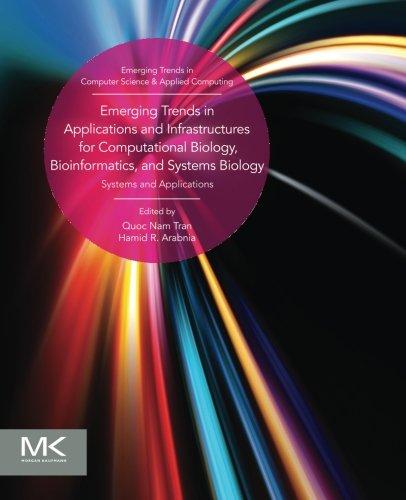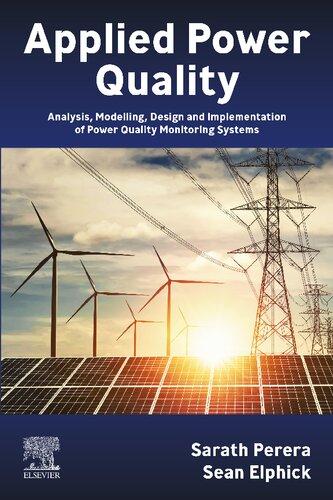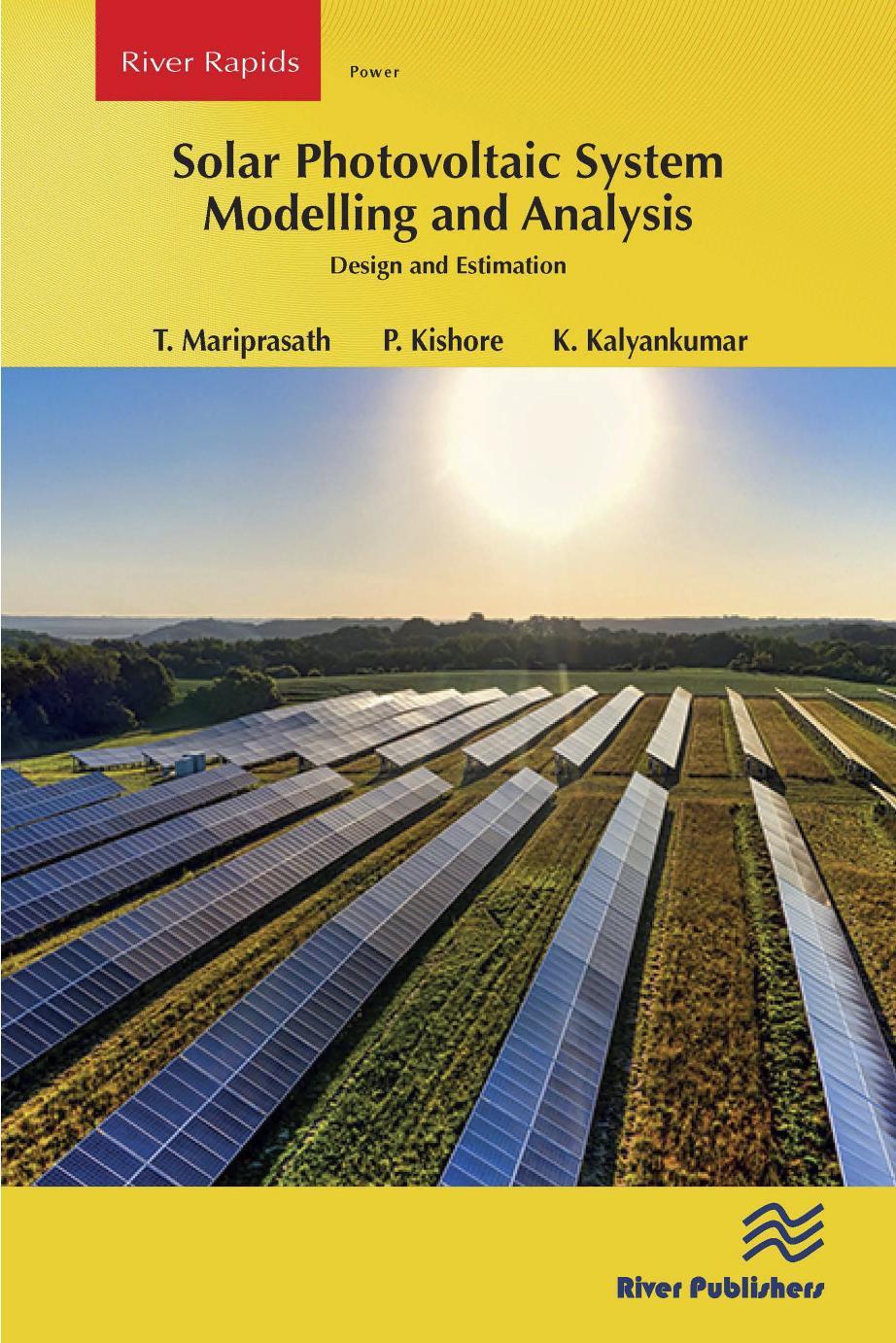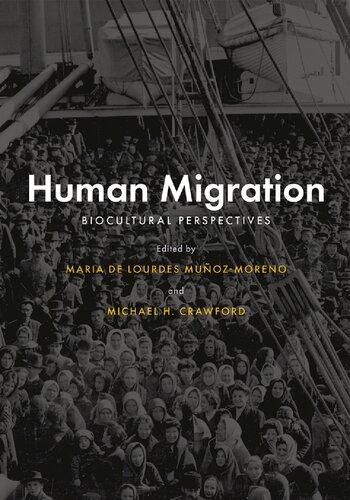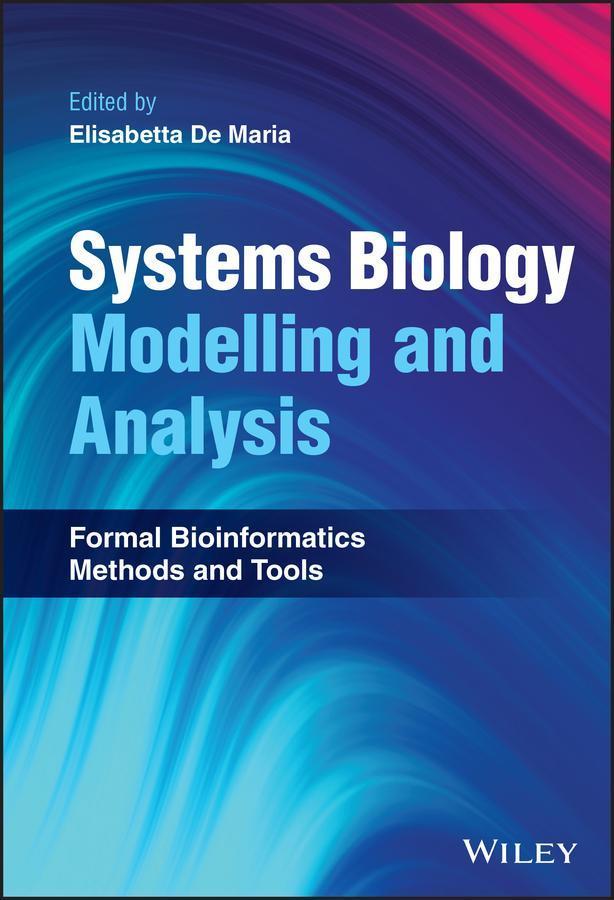SystemsBiologyModellingandAnalysis
Editedby
ElisabettaDeMaria
UniversitéCôted’Azur France
Thiseditionfirstpublished2023
©2023JohnWiley&Sons,Inc.
Allrightsreserved.Nopartofthispublicationmaybereproduced,storedinaretrieval system,ortransmitted,inanyformorbyanymeans,electronic,mechanical, photocopying,recordingorotherwise,exceptaspermittedbylaw.Adviceonhowto obtainpermissiontoreusematerialfromthistitleisavailableathttp://www.wiley.com/ go/permissions.
TherightofElisabettaDeMariatobeidentifiedastheauthoroftheeditorialmaterialin thisworkhasbeenassertedinaccordancewithlaw.
RegisteredOffice
JohnWiley&Sons,Inc.,111RiverStreet,Hoboken,NJ07030,USA
Fordetailsofourglobaleditorialoffices,customerservices,andmoreinformationabout Wileyproductsvisitusatwww.wiley.com.
Wileyalsopublishesitsbooksinavarietyofelectronicformatsandbyprint-on-demand. Somecontentthatappearsinstandardprintversionsofthisbookmaynotbeavailablein otherformats.
Trademarks:WileyandtheWileylogoaretrademarksorregisteredtrademarksofJohn Wiley&Sons,Inc.and/oritsaffiliatesintheUnitedStatesandothercountriesandmay notbeusedwithoutwrittenpermission.Allothertrademarksarethepropertyoftheir respectiveowners.JohnWiley&Sons,Inc.isnotassociatedwithanyproductorvendor mentionedinthisbook.
LimitofLiability/DisclaimerofWarranty
Inviewofongoingresearch,equipmentmodifications,changesingovernmental regulations,andtheconstantflowofinformationrelatingtotheuseofexperimental reagents,equipment,anddevices,thereaderisurgedtoreviewandevaluatethe informationprovidedinthepackageinsertorinstructionsforeachchemical,pieceof equipment,reagent,ordevicefor,amongotherthings,anychangesintheinstructionsor indicationofusageandforaddedwarningsandprecautions.Whilethepublisherand authorshaveusedtheirbesteffortsinpreparingthiswork,theymakenorepresentations orwarrantieswithrespecttotheaccuracyorcompletenessofthecontentsofthiswork andspecificallydisclaimallwarranties,includingwithoutlimitationanyimplied warrantiesofmerchantabilityorfitnessforaparticularpurpose.Nowarrantymaybe createdorextendedbysalesrepresentatives,writtensalesmaterialsorpromotional statementsforthiswork.Thefactthatanorganization,website,orproductisreferredto inthisworkasacitationand/orpotentialsourceoffurtherinformationdoesnotmean thatthepublisherandauthorsendorsetheinformationorservicestheorganization, website,orproductmayprovideorrecommendationsitmaymake.Thisworkissold withtheunderstandingthatthepublisherisnotengagedinrenderingprofessional services.Theadviceandstrategiescontainedhereinmaynotbesuitableforyour situation.Youshouldconsultwithaspecialistwhereappropriate.Further,readers shouldbeawarethatwebsiteslistedinthisworkmayhavechangedordisappeared betweenwhenthisworkwaswrittenandwhenitisread.Neitherthepublishernor authorsshallbeliableforanylossofprofitoranyothercommercialdamages,including butnotlimitedtospecial,incidental,consequential,orotherdamages.
LibraryofCongressCataloging-in-PublicationDataAppliedfor: ISBN9781119716532(hardback)
CoverDesign:Wiley
CoverImage:©EkaterinaGoncharova/GettyImages
Setin9.5/12.5ptSTIXTwoTextbyStraive,Chennai,India
TomychildrenArthurandJuliette,whoareeagertogrowuptoreadthis book,whichseemsmagicaltothem.
Contents
ListofContributors xv
Preface xix Acknowledgments xxv
1Introduction 1 ElisabettaDeMaria
1.1WhyWritingModels 2
1.2ModellingandValidatingBiologicalSystems:ThreeSteps 4
1.2.1ModellingBiologicalSystems 4
1.2.2SpecifyingBiologicalSystems 7
1.2.3ValidatingBiologicalSystems 8 References 9
2PetriNetsforSystemsBiologyModellingand Analysis 15 FeiLiu,HiroshiMatsuno,andMonikaHeiner
2.1Introduction 15
2.2ARunningExample 16
2.3PetriNets 16
2.3.1Modelling 17
2.3.2Analysis 18
2.3.3Applications 20
2.4ExtendedPetriNets 20
2.5StochasticPetriNets 20
2.5.1Modelling 21
2.5.2StochasticSimulation 21
2.5.3CSLModelChecking 22
2.5.4Applications 23
2.6ContinuousPetriNets 24
viii Contents
2.6.1Modelling 24
2.6.2DeterministicSimulation 24
2.6.3SimulativeModelChecking 25
2.6.4Applications 27
2.7FuzzyStochasticPetriNets 27
2.7.1Modelling 27
2.7.2FuzzyStochasticSimulation 27
2.7.3Applications 29
2.8FuzzyContinuousPetriNets 29
2.8.1Modelling 29
2.8.2FuzzyDeterministicSimulation 29
2.8.3Applications 30
2.9Conclusions 30
Acknowledgment 31 References 31
3ProcessAlgebrasinSystemsBiology 35 PaoloMilazzo
3.1Introduction 35
3.2ProcessAlgebrasinConcurrencyTheory 36
3.2.1 π-Calculus 38
3.3AnalogiesbetweenBiologyandConcurrentSystems 42
3.3.1ElementsofCellBiology 43
3.3.2CellPathways 44
3.3.3“MoleculesasProcesses”Abstraction 48
3.4ProcessAlgebrasforQualitativeModelling 51
3.4.1FormalAnalysisTechniques 51
3.5ProcessAlgebrasforQuantitativeModelling 53
3.5.1ChemicalKinetics 54
3.5.2StochasticProcessAlgebras 59
3.6Conclusions 61 Acknowledgments 61 References 62
4TheRule-BasedModelApproach: AKappaModelfor HepaticStellateCellsActivationbyTGFB1 69 MatthieuBouguéon,PierreBoutillier,JérômeFeret,OctaveHazard, andNathalieThéret
4.1Introduction 69
4.1.1ModellingSystemsofBiochemicalInteractions 69
4.1.2ModellingLanguages 70
4.1.3Kappa 71
4.1.3.1Overview 71
4.1.3.2SemanticsofKappa 72
4.1.3.3KappaEcosystem 73
4.1.3.4MainLimitations 75
4.1.4ModellingaPopulationofHepaticStellateCells 76
4.1.5Outline 78
4.2Kappa 78
4.2.1SiteGraphs 78
4.2.1.1Signature 79
4.2.1.2Complexes 81
4.2.1.3Patterns 82
4.2.1.4EmbeddingsBetweenPatterns 84
4.2.2SiteGraphRewriting 86
4.2.2.1InteractionRules 86
4.2.2.2ReactionsInducedbyanInteractionRule 87
4.2.2.3UnderlyingReactionNetwork 88
4.3ModelofActivationofStellateCells 91
4.3.1OverviewofModel 91
4.3.2SomeElementsofBiochemistry 91
4.3.2.1ReactionHalf-Time 92
4.3.2.2Conversion 93
4.3.2.3ProductionEquilibrium 93
4.3.2.4ErlangDistributions 94
4.3.3InteractionRules 94
4.3.3.1BehaviorofTGFB1Proteins 95
4.3.3.2RenewalofQuiescentHSCs 96
4.3.3.3ActivationandDifferentiation 97
4.3.3.4ProliferationofActivatedHepaticStellateCells 99
4.3.3.5ProliferationofMyofibroblasts 100
4.3.3.6ApoptosisandSenescenceofMyofibroblasts 101
4.3.3.7InactivationofMyofibroblasts 102
4.3.3.8BehaviorofInactivatedHepaticStellateCells 102
4.3.3.9ProliferationofReactivatedCells 105
4.3.3.10DegradationofReactivated MFB106
4.3.3.11BehaviorofReceptors 106
4.3.4Parameters 108
4.4Results 109
4.4.1StaticAnalysis 109
4.4.2UnderlyingReactionNetwork 111
4.4.3Simulations 111
x Contents
4.5Conclusion 113 References 116
5PathwayLogic:CurationandAnalysisof Experiment-BasedSignalingResponseNetworks 127 MerrillKnapp,KeithLaderoute,andCarolynTalcott
5.1Introduction 127
5.2PathwayLogicOverview 130
5.3PLRepresentationSystem 133
5.3.1RewritingLogicandMaude 133
5.3.2PathwayLogicLanguage 134
5.3.3PetriNetRepresentation 140
5.3.4ComputingwithPetriNets 142
5.4PathwayLogicAssistant 144
5.5DatumCurationandModelDevelopment 150
5.5.1DatumCuration 150
5.5.2ModelDevelopment–InferringRules 153
5.6STM8 155
5.6.1LPSResponseNetwork 156
5.6.2CombiningNetworkAnalyses 158
5.6.3DeathMap:AReviewModel 159
5.6.3.1ReviewMapasaSummaryoftheStateoftheArt 163
5.7Conclusion 163
Acknowledgments 164
Appendix5.A:SummaryofSTM8Networks 164 References 168
6BooleanNetworksandTheirDynamics:TheImpactof Updates 173 LoïcPaulevéandSylvainSené
6.1Introduction 173
6.1.1GeneralNotationsandDefinitions 178
6.2BooleanNetworkFramework 179
6.2.1OntheSimplicityofBooleanNetworks 179
6.2.2BooleanNetworkSpecification 181
6.2.3BooleanNetworkDynamics 183
6.2.3.1Updates 183
6.2.3.2TransitionsandTrajectories 185
6.2.3.3UpdatingModeandTransitionGraph 186
6.2.3.4DeterministicUpdatingModes 187
6.2.3.5Non-deterministicUpdatingModes 199
6.3BiologicalCaseStudies 208
6.3.1FloralMorphogenesisof A.thaliana209
6.3.2CellCycle 211
6.3.3VegetalandAnimalZeitgebers 212
6.3.4AbstractionofQuantitativeModels 214
6.4FundamentalKnowledge 216
6.4.1StructuralPropertiesandAttractors 216
6.4.1.1FixedPointsStability 216
6.4.1.2FeedbackCyclesasEnginesofDynamicalComplexity 217
6.4.1.3AboutSignedFeedbackCycles 219
6.4.2ComputationalComplexity 224
6.4.2.1ExistenceofaFixedPoint 225
6.4.2.2ReachabilityBetweenConfigurations 227
6.4.2.3LimitConfigurations 229
6.5Conclusion 232
6.5.1UpdatingModesandTime 232
6.5.1.1ModellingDurations 233
6.5.1.2ModellingPrecedence 234
6.5.1.3ModellingCausality 234
6.5.2TowardanUpdatingModeHierarchy 235
6.5.2.1SoftwareTools 235
6.5.3OpeningonIntrinsicSimulations 236 Acknowledgments 238 References 238
7AnalyzingLong-TermDynamicsofBiologicalNetworks WithAnswerSetProgramming 251 EmnaBenAbdallah,MaximeFolschette,andMorganMagnin
7.1Introduction 251
7.2StateoftheArt 253
7.2.1QualitativeModellingofBiologicalSystems 253
7.2.2IdentifyingAttractors:AMajorChallenge 255
7.2.3AnswerSetProgrammingforSystemsBiology 257
7.2.4EnumeratingAttractorsofaBiologicalModelUsingAnswerSet Programming 258
7.3BasicNotionsofAnswerSetProgramming 259
7.3.1SyntaxandRules 259
7.3.2Predicates 261
7.3.3Scripting 263
7.4DynamicModellingUsingAsynchronousAutomata Networks 264
7.4.1Motivation:UsingASPtoAnalyzetheDynamics 264
7.4.2DefinitionofAsynchronousAutomataNetworks 264
7.4.3SemanticsandDynamicsofAsynchronousAutomata Networks 267
7.4.4StableStatesandAttractorsinAsynchronousAutomata Networks 271
7.5EncodingintoAnswerSetProgramming 275
7.5.1TranslatingAsynchronousAutomataNetworksintoAnswerSet Programs 276
7.5.2Stable-StateEnumeration 278
7.5.3Attractors 280
7.5.3.1CycleEnumeration 281
7.5.3.2AttractorEnumeration 285
7.5.3.3PythonScripting 288
7.6CaseStudies 290
7.6.1ToyExample 290
7.6.2BacteriophageLambda 292
7.6.3BenchmarksonModelsComingfromtheLiterature 293
7.7Conclusion 297 Acknowledgments 299 References 299
8HybridAutomatainSystemsBiology 305 AlbertoCasagrande,RaffaellaGentilini,CarlaPiazza,and AlbertoPolicriti
8.1Introduction 305
8.2Basics 307
8.2.1LanguagesandTheories 308
8.3Events 313
8.3.1TemporalLogics 316
8.3.2ModelChecking 318
8.4EventsandTime 318
8.4.1HybridAutomataandGeneRegulatoryNetworks 319
8.4.2ExpressibilityandDecidabilityIssues 323
8.5Events,Time,andUncertainty 327
8.6Conclusions 331 Acknowledgement 332 References 332
9KalleParvinen:OrdinaryDifferentialEquations 339 KalleParvinen
9.1Introduction 339
9.2AnalyzingandSolvingOrdinaryDifferentialEquations 340
9.2.1SolvingOrdinaryDifferentialEquationsAnalytically 340
9.2.2EquilibriaandTheirStability 341
9.2.3SolvingDifferentialEquationsNumerically 344
9.3MechanisticDerivationofOrdinaryDifferentialEquations 345
9.3.1ElementaryUnimolecularReaction(EUR) 346
9.3.2ElementaryBimolecularReaction(EBR) 347
9.3.3ElementaryBimolecularReactionofTwoIdentical Molecules 348
9.3.4ReactionNetworks 348
9.4ClassicalLotka–VolterraDifferentialEquation 350
9.4.1ModelFormationandHistory 350
9.4.2Phase-PlaneAnalysisandEquilibria 351
9.4.3ConstantofMotion 352
9.4.4AveragePopulationDensities 353
9.4.5EffectofFishingonthePopulationDensities 353
9.5ModelofKillerT-CellandCancerCellDynamics 354
9.5.1ModelDefinition 354
9.5.1.1ResourceDynamics 354
9.5.1.2CancerCellDynamics 355
9.5.1.3KillerT-CellDynamics 356
9.5.2ModelDynamicsWithoutTreatment 357
9.5.3TreatmentEffects 358
9.6Conclusion 359 Acknowledgments 359 References 360
10NetworkModellingMethodsforPrecision Medicine 363 ElioNushi,Victor-BogdanPopescu,Jose-AngelSanchezMartin, SergiuIvanov,EugenCzeizler,andIonPetre
10.1Introduction 363
10.2NetworkModellingMethods 364
10.2.1NetworkCentralityMethods 364
10.2.1.1RunningExample 366
xiv Contents
10.2.1.2DegreeCentralities 366
10.2.1.3ProximityCentralities 368
10.2.1.4PathCentrality:Betweenness 373
10.2.1.5SpectralCentralities 377
10.2.2SystemControllabilityMethods 383
10.2.2.1NetworkControllability 384
10.2.2.2MinimumDominatingSets 387
10.2.3Software 388
10.2.3.1NetworkX 389
10.2.3.2Cytoscape 390
10.2.3.3NetControl4BioMed 390
10.3ApplicationsofNetworkModellinginPersonalized Medicine 392
10.3.1ConstructingPersonalizedDiseaseNetworks 392
10.3.2AnalysisMethods 393
10.3.3Results 398
10.3.3.1StructuralControllabilityAnalysis 398
10.3.3.2MinimumDominatingSetAnalysis 406
10.4Conclusion 412 References 413
11Conclusion 425
ElisabettaDeMaria
Index 427
ListofContributors
EmnaBenAbdallah IndependentResearcher Nantes
France
MatthieuBouguéon Inria,CNRS,IRISA,UMR6074 UniversityofRennes Rennes
France
Inserm,EHESP,Irset,UMRS1085 UniversityofRennes Rennes
France
PierreBoutillier NomadicLabs
Paris
France
AlbertoCasagrande DepartmentMathematicsand Geosciences
UniversityofTrieste Trieste
Italy
EugenCzeizler DepartmentofInformation Technology ÅboAkademiUniversity Turuku
Finland
NationalInstituteofResearchand DevelopmentinBiologicalSciences Bucharest
Romania
ElisabettaDeMaria UniversitéCôted’Azur CNRS,I3S SophiaAntipolis
France
JérômeFeret TeamAntique,Inria
Paris
France
Écolenormalesupérieure DI-ENS(ÉNS,CNRS,PSL University)
Paris France
xvi ListofContributors
MaximeFolschette
Univ.Lille,CNRS,CentraleLille
UMR9189CRIStAL Lille
France
RaffaellaGentilini DepartmentofMathematicsand ComputerScience UniversityofPerugia Perugia
Italy
OctaveHazard TeamAntique,Inria
Paris
France
Écolenormalesupérieure DI-ENS(ÉNS,CNRS,PSL University)
Paris
France
ÉcolePolytechnique Palaiseau
France
MonikaHeiner ComputerScienceDepartment FacultyofMathematics,Natural SciencesandComputerScience BrandenburgUniversityof TechnologyCottbus-Senftenberg Cottbus
Germany
SergiuIvanov IBISCLaboratory UniversitéParis-Saclay UniversitéÉvry
Paris
France
MerrillKnapp InformationandComputing Sciences
SRIInternational MenloPark,CA USA
KeithLaderoute NumentusTechnologies,Inc. MenloPark,CA USA
FeiLiu SchoolofSoftwareEngineering SouthChinaUniversityof Technology
Guangzhou
China
MorganMagnin CentraleNantes,Universitéde Nantes,CNRS,LS2N Nantes
France
HiroshiMatsuno GraduateSchoolofScienceand TechnologyforInnovation YamaguchiUniversity Yamaguchi
Japan
PaoloMilazzo DipartimentodiInformatica UniversitàdiPisa
Pisa
Italy
ElioNushi DepartmentofComputerScience
UniversityofHelsinki
Helsinki
Finland
KalleParvinen DepartmentofMathematicsand Statistics UniversityofTurku
Turku
Finland
AdvancingSystemsAnalysis Program,InternationalInstitutefor AppliedSystemsAnalysis Laxenburg
Austria
LoïcPaulevé
BordeauxINP,CNRS,LaBRI UMR5800
UniversityofBordeaux
Talence
France
IonPetre
NationalInstituteofResearchand DevelopmentinBiologicalSciences Bucharest
Romania
DepartmentofMathematicsand Statistics UniversityofTurku
Turku
Finland
ListofContributors xvii
CarlaPiazza DepartmentofMathematics ComputerScience,andPhysics UniversityofUdine
Udine
Italy
AlbertoPolicriti DepartmentofMathematics ComputerScience,andPhysics UniversityofUdine
Udine
Italy
Victor-BogdanPopescu DepartmentofInformation Technology ÅboAkademiUniversity
Turku
Finland
Jose-AngelSanchezMartin DepartmentofComputerScience TechnicalUniversityofMadrid
Madrid
Spain
SylvainSené CNRS,LIS AixMarseilleUniversity
Marseille
France
xviii ListofContributors
CarolynTalcott InformationandComputing Sciences
SRIInternational MenloPark,CA
USA
NathalieThéret
Inria,CNRS,IRISA,UMR6074 UniversityofRennes
Rennes
France
Inserm,EHESP,Irset,UMRS1085 UniversityofRennes
Rennes France
Preface Overview
Formalmethodsofcomputersciencearenowadaysunavoidabletomodel, study,andmakeadvancedanalysisofbiologicalsystems.Severalformalismsaresuitabletomodelbiologicalsystems:Petrinets,Boolean networks,reactionrules,processalgebras,ordinarydifferentialequations, timedandhybridautomata,etc.Onceabiologicalsystemisencoded usingoneoftheseformalisms,someformaltechniquessuchasmodel checkingcanbeusedtospecifysomeexpectedpropertiesofthesystem andverifywhethertheyholdornotinthemodelatissue.Thisgreatly helpsinvalidating/refutingbiologicalhypothesis,makingpredictions, andassociatingparameterswithbiologicalphenomena.Inthisbook,we presentandcomparethemainformalismsusedinsystemsbiologytomodel biologicalnetworks.
OrganizationandFeatures
Somecrucialformalapproachesusedinsystemsbiologyarepresented indetail,alongwiththeiradvantages/drawbacksandmainapplications. ApartfromChapters1(Introduction)and11(Conclusion),eachchapterof thebookisdevotedtooneofthekeyformalismsusedintheliteratureto model(andverify)biologicalsystems.Eachchapterincludesanintuitive presentationofthetargetedformalism,abriefhistoryoftheformalismand ofitsapplicationsinsystemsbiology,aformaldescriptionoftheformalism anditsvariants,atleastonerealisticcasestudy,someapplicationsofformal techniquestovalidateandmakedeepanalysisofmodelsencodedwiththe formalism,andadiscussiononthekindofbiologicalsystemsforwhichthe formalismissuited,alongwithconcreteideasonitspossibleevolutions.
Somechaptersalsoincludethedescriptionofatoolimplementingthe formalismandasortofhow-topracticalguideaboutusingthetool.The networkschosentoserveascasestudiesspanthefieldofsystemsbiology inalargeway(theyrangefromgeneregulatorynetworkstoprey-predatory networks).
Somechaptersarequitetechnicalandmakeuseofaninvolvedformal notation,butotherchaptersaremorefocusedonthebiologicalapplications (inparticular,thelastchapterbeforetheconclusionopenstosomeapplicationsinprecisionmedicine).Foreachchapter,thenotationhasbeencarefullychosensothatitlooksthemostnaturalandsuitedonetorepresent theformalismatissue.Pleasenotethattheauthorsofsomechaptersarethe oneswhofirstintroducedthecorrespondingformalismsand/ortoolsinthe literature.Also,notethatallthechaptersarethoughttobeself-contained: thereaderwillfindineachchapteralltheelementsthatareusefultounderstandandlearn,withouthavingtoreadotherworks.Somechapterscontain referencestootherchapterstomakecomparisons,buttherearenostrong dependenciesamongchapters,andthereadercandecidetoreadchapters inadifferentorderthantheonechoseninthisbook.
Someapproachesappearedsomedecadesago,othersarequiterecent,but allofthemarepresentedfromacurrentandgroundbreakingpointofview. Wedescribehoweachformalismanswerstodayneedsinsystemsbiology, whichmakesarealcontributiontothescientificcommunity.
Thebookisorganizedasfollows.
Chapter1focusesonthenecessityofusingformalmethodsinthedomain ofsystemsbiology.Itintroducesthemainformalapproachestothemodellingofbiologicalsystemsandthestepstofollowtoimproveandvalidate theobtainedmodels.
Chapter2isdevotedtoPetrinets,animportanttoolforstudyingdifferent aspectsofbiologicalsystems,rangingfromsimplesignalingpathways, metabolicnetworks,andgeneticnetworkstotissuesandorgans.Toexplore suchvarietiesofbiologicalsystems,manyvariantsofPetrinetshavebeen proposed.Thischapterexplainshowthesedifferentnetclassesareapplied tomodellingandanalysisofthesedifferenttypesofbiologicalsystems withtheillustrativeexampleoftheyeastpolarizationmodeldescribingthe pheromone-inducedG-proteincyclein Saccharomycescerevisiae.
Chapter3describesthedevelopmentofProcessAlgebrasandrelated analysismethodsinthecontextofsystemsbiology.Itpresentsconcepts thatareatthebasisoftheapplicationofthisclassofformalismsinthe biologicalcontext,providingtherelevantnotionsofbiochemistryandcell biology,anddiscussingbothqualitativeandquantitativeapproaches.The �� -calculusischosenasrepresentativeProcessAlgebrainordertogive
modellingexamplesandclarifytherelationshipsoftheprocessalgebraic approachwiththetraditionalmodellingofcellpathwaysassetsofchemical reactions.
Chapter4describesKappa,asitegraphrewritinglanguage.Asarealisticcasestudy,apopulationofhepaticstellatecellsundertheeffectofthe tgfb proteinismodeled.Kappaoffersarule-centricapproach,inspiredfrom chemistry,whereinteractionruleslocallymodifythestateofasystemthat isdefinedasagraphofcomponents,connectedornot.Inthiscasestudy, thecomponentsareoccurrencesofhepaticstellatecellsindifferentstates andoccurrencesoftheprotein tgfb.Theprotein tgfb inducesdifferentbehaviorsofhepaticstellatecells,therebycontributingeithertotissuerepairorto fibrosis.Betterunderstandingtheoverallbehaviorofthemechanismsthat areinvolvedintheseprocessesisakeyissuetoidentifymarkersandtherapeutictargetslikelytopromotetheresolutionoffibrosisattheexpenseof itsprogression.
Chapter5introducesPathwayLogic,aformal,rule-basedsystemand interactiveviewerfordevelopingexecutablemodelsofcellularprocesses. Itincludesacuratedevidenceknowledgebaseandadiversecollectionof modelsforevaluationbyusers.ThischapterpresentsthePathwayLogic representationsystemandthealgorithmsusedbythePathwayLogic Assistant.Theoverviewdiscussesrewritinglogicanditsimplementation intheMaudesystem,theformalbasisofPathwayLogic.Othersectionsin thechapterpresenttheSTM8collectionofsignalingresponsenetworks, provideoverviewsofthecurationprocessandhowrulesareinferred,and illustratetheutilityofPathwayLogicusingthe Lps (lipopolysaccharide) andCellDeathmodels.
Chapter6presentsBooleannetworks,amathematicalmodelthathas beenwidelyusedsincedecadesinthecontextofbiologicalregulation networksqualitativemodelling.Theyconsistincollectionsofentities, eachhavingtwopossiblelocalstates(1–activeand0–inactive),which interactwitheachotheroverdiscretetime.Thesimplicityoftheirsetting togetherwiththeirhighabstractionlevelareespeciallyconvenientto focusonfoundationsofinformationtransmissioningeneticregulation, andonmathematicalexplanationandpredictionofphenomenological observations.ThischapteraimstopresenttheBooleanmodellingframeworkbydevelopingitstheoreticalbasesandemphasizingitsusefulness forcapturingbiologicalregulationphenomena.Butitgoesbeyondthat bycoveringtheirabilitytocapturetheinformationtransmissionandits consequencesdependingonthewaystheentitiesupdatetheirlocalstate overtime.
Chapter7dealswithAnswerSetProgramming(ASP),whichhasproven tobeastronglogicprogrammingparadigmtodealwiththeinherentcomplexityofthebiologicalmodels,allowingustoquicklyinvestigateawide rangeofconfigurations.ASPcanefficientlyenumeratealargenumberof answersets,aswellaseasilyfiltertheresultsthankstoconstraintsbased oncertainproperties.ThischapterfirstmotivatesthemeritsofASPinbiologicalstudiesbasedonthestateoftheart.Then,itintroducesthebasic conceptsaboutASPanditsuseinsystemsbiology.Afterhavinggivenan overviewofthedifferentissuesthatcanbetackledusingASP,itthenfocuses ononeproblemthatisofcriticalimportance:model-checkingwithASP,and morespecifically,theidentificationofattractors.Themeritsofthisstudyare illustratedusingcasestudies.
Chapter8focusesonhybridautomata,aformalismintroducedanddevelopedwiththeaimofintegratingdiscreteandcontinuousingredientsina singlesimulationtool.Thischapterintroducessomekeylogicformalisms forsystemsbiology;illustratessomeautomata-basedsimulationtools;discussestherole,potential,andcomplexityofthenotionoftimeinautomata; andpresentsseveralmethodologiestointegratediscreteandcontinuous, time-oriented,formalinstrumentsforsystemsbiology.Severalrealisticcase studiesaretreated.
Chapter10discussesseveralnetworkmodellingmethodsandtheir applicabilitytoprecisionmedicine.Thechapterintroducesacertainnumberofnetworkcentralitymethods(degreecentrality,closenesscentrality, eccentricitycentrality,betweennesscentrality,andeigenvector-based prestige)andtwosystemscontrollabilitymethods(minimumdominating setsandnetworkstructuralcontrollability).Theirapplicabilitytoprecisionmedicineonthreemultiplemyelomapatientdiseasenetworksis demonstrated.Eachnetworkconsistsofprotein–proteininteractionsbuilt aroundaspecificpatient’smutatedgenes,aroundthetargetsofthedrugs usedinthestandardofcareinmultiplemyeloma,andaroundmultiple myeloma-specificessentialgenes.Foreachnetwork,itisdemonstrated howthediscussednetworkmethodscanbeusedtoidentifypersonalized, targeteddrugcombinationsuniquelysuitedtothatpatient.
Finally,Chapter11underlinessomekeyconceptsofthebookand opensonpossibleevolutionsinthedomainofformalmethodsforsystems biology.
Audience
Thisbookcanbeofinteresttoscientistsatalllevels,frommasterstudents toseniorscientiststhatwanttolearnaboutformalmethodsforsystems biology.Thebookismainlyaddressedtobioinformaticiansbutcanalsobe appreciatedbybiologists,medicaldoctors,computerscientists,andmathematiciansinterestedinthishighlyinterdisciplinaryarea.
Nice,August2022
ElisabettaDeMaria
Acknowledgments
Iwouldliketothankalltheauthorsofthisbook.Theyarehighlyqualified andverybusyresearchersandteachers,andI’mhonoredtheyacceptedto contributetothisbook.
I’mdeeplygratefultoFrançoisFages,whoin2008introducedmetothe fieldofsystemsbiologyandtransmittedtomehispassionforthisresearch domain.Iwouldliketoexpressthankstoallthemembersoftheteam“DiscreteModelsforComplexSystems”atI3SresearchlaboratoryinSophia Antipolis.AtI3S,Icouldfindastimulatingscientificenvironmentwhich wasverypropitioustomyresearchesandtothewritingofthisbook.Iwould liketoexpressmygratitudetoallmystudents,frombachelor’stoPh.D.,for theextraordinaryinputstheyhaveprovidedmeduringthelastyears.
I’mdeeplyindebtedtomycompanionandmyparentswhosupportedmy effortsinthisendeavor.FinallyaspecialthanksgoestomychildrenArthur andJuliette,wholookatmyworkwithenthusiasm,andareconvincedthat myprofessionisthemostbeautifulintheworld.
Introduction
ElisabettaDeMaria
UniversitéCôted’Azur,CNRS,I3S,SophiaAntipolis,France
Thisbookisdevotedtotheuseof formalmethods ofcomputerscienceinthe domainof systemsbiology,whichisafieldthatbringstogetherresearchers frombiological,mathematical,computational,andphysicalsciencesin ordertostudy,conceive,simulate,andmakeadvancedanalysisofbiological systems(Idekeretal.,2001).Tothisaim,biologicalknowledgeisoften extractedfromhigh-throughput“omics”(genomics,transcriptomics, proteomics,metabonomics,etc.)datageneratedthankstonext-generation moleculartechnologies.Theobtainedpiecesofinformationarethenintegratedinto interactionmaps or networks,whichrepresenttheinteractions amongtheinvolvedbiologicalcompounds.Inthesenetworks,nodes representthemodeledentities,andedgesstandfortheirinteractions. Severalkindsofbiologicalnetworksareinthescopeofsystemsbiology: generegulatorynetworks(whichrepresentgenes,theirregulators,and theregulatoryrelationshipsbetweenthem),protein–proteininteraction networks(whichmodelthephysicalcontactsbetweenproteinsinacell), metabolicnetworks(whichrepresentthebiochemicalreactionscatalyzed byenzymesinacell),biologicalneuralnetworks(whichdescribehow neuronsinthebraincommunicatethroughtheirsynapses),ecological networks(whichmodelthebiologicalinteractionsofanecosystem),etc. Thesenetworkshelpinhavinga globalviewondata,turningdatafrom individualpiecestopiecesthatconnecttoformasystem.Asstatedby KitanoinKitano(2002),tounderstandbiologyatthesystemlevel,wemust examinethestructureanddynamicsofcellularandorganismalfunctions ratherthanthecharacteristicsofisolatedpartsofacelloranorganism. Thecoreofsystemsbiologyactuallyconsistsinturningdataintonetworks towhichwewanttogivea dynamics.Asamatteroffact,thesenetworks
SystemsBiologyModellingandAnalysis:FormalBioinformaticsMethodsandTools, FirstEdition.EditedbyElisabettaDeMaria. ©2023JohnWiley&Sons,Inc.Published2023byJohnWiley&Sons,Inc.
areconsideredasdynamicalsystems,andwewanttostudytheevolution oftheircomponentsaccordingtothetimeevolution.The timedimension isthuscrucial:itisrelevanttolinkthetopologyofthesenetworkstotheir dynamics(Richard,2010).Itbehovesustounderlinethatthedynamical systemswetreatinsystemsbiologyarequitedifferentfromtheonesstudied inphysics.Themaincomplicationderivesfromthefactthatthelarge-scale datawegetareoftenincomplete,heterogeneous,andinterdependent (dependenciesareusuallyhidden).Furthermore,thedatainourpossession aretoofewwithrespecttothesearchspace.Infact,thesearchspacegrows exponentiallywiththenumberofmeasuredcompounds,whichgivesan explosionofthenumberofparameters.Asaconsequence,itisalmost impossibletoobtainauniquemodelfromagivendataset,andasystem isgenerallydescribedbyafamilyofabstractmodels(Videlaetal.,2017). Theuseofformalmethodsofcomputerscienceisthenhelpfultoreason overthesefamiliesofmodelsandtodiscriminatemodelsaccordingtothe biologicalpropertiestheysatisfy(GilbertandHeiner,2015).
1.1WhyWritingModels
Systemsbiologyseeksatpointingouttheemergenceofbiologicalphenomena(asystemismorethanthesumofitsparts),anditwouldbereductiveto considerthemodelingtaskasawaytostoreasmoreinformationaspossibleconcerningabiologicalsystem.Modelsarerarelyanendinthemselves, andtheyareveryoftenwritteninordertoanswersomespecificquestions. Wecanidentifythefollowingmainreasonsforwritingformalmodelsof biologicalsystems.
Validating/refutingabiologicalhypothesis: Biologistsoftengetintouch withcomputerscientists,mathematicians,and/orphysicistsbecausethey conjectureahypothesisconcerningabiologicalsystemandtheyneed helpinvalidating/refutingthishypothesis.Inthiscase,weneedtoformalizenotonlythebiologicalsystematissuebutalsotheassociated(setof) hypothesis.Toolssuchasmodelcheckers(Clarkeetal.,1999)arethen employedtotestwhetherthehypothesisholdsornotinthesystem. Makingpredictions: Toavoidtoperformwetexperimentsinthelaboratory, modelscanbeexploitedfortheirpredictivepower.Inthisregard,irrespectiveofwhetherexperimentscanbeexpensive,time-consuming,and intrusiveforlivingcreatures,weshouldconsiderthatwetexperimentsare
sometimesunsatisfactoryforlackof operability (somecompoundscannot bemanipulated)and observability (theexpressionofsomecompounds cannotbeobserved).Modelscanthushelpinpredictingthevaluesof someentitiesthatcannotbeobserved.Theycanalsopredictthereactions thesystemwillhaveundersomespecialconditions,forexample,when confrontedwithexternalfactorssuchasdisease,medicine,andenvironmentalchanges(TalcottandKnapp,2017).Thepredictedbehaviorsneed tobeformallyspecifiedtoautomatereasoningonthem.
Associatingparameterswithbiologicalphenomena: Biologistsoften expectbiologicalsystemstodisplaysomeknownbehaviors,butthey donotalwaysknowunderwhichconditionsthesebehaviorscanbe observed.Totacklethisproblem,itisneededtowriteamodelformalizing thebiologicalknowledgeconcerningthesystematissueandtolook forparameterssuchthattheexpecteddynamicalpropertiesaretruein themodel(thesepropertiesareoftenencodedusingformalmethods).
Parametersearch iscrucialinartificialintelligence,andtechniques fromthisdomainareemployedinsystemsbiologytoinfertheparametersofbiologicalsystems.Observethatparametersearchcanalso beexploitedtofindparameterssuchthatagivenmodelcanreproduce somegivenexecutiontraces(data-fitting).Again,thesetracescanbe formallyencoded.
Whateverthereasonforwritingamodelis,formalmethodsarethus importantforhavingdeepinsightsintothesystem(s)involved.Ofcourse, formalmethodscanalsobeexploitedto validatemodels withrespectto somealreadyacquiredbiologicalknowledge,i.e.toverifywhetherthe encodedmodelscanreproducesomebehaviorstheyaresupposedtodisplay (anddonotdisplaysomeunwantedbehaviors).Alsointhiscase,the behaviorstobecheckedshouldbeformallyencoded.Insystemsbiology, modelsarenotstatic,andtheyareoftentheobjectofmodificationsto incorporatenewbiologicalknowledge.Discoverypassesthroughunceasing roundsbetweenmodellingandexperiments.Therefore,itislikeacyclein whichexperimentsleadtothepropositionofnewimprovedmodelsand inturnthesemodelssuggestenhancedexperimentsandsoon.Formal methodsareagainnecessarytoverifythatthenewinformationiscorrectly encodedandconsistentwiththepreviousknowledge.Tosummarize,formalmethodsareunavoidabletounderstandandcontrolbiologicalsystems and,moregenerally,toautomatereasoningonthedifferentbehaviorsof biologicalsystems.
1.2ModellingandValidatingBiologicalSystems: ThreeSteps
Asstatedbefore,formalmethodsgreatlyhelpinunderstandinghowcomplexbiologicalsystemswork.Formalapproachesforsystemsbiologyusually followthenextthreesteps:
1. Describingthesystematissueusingaformallanguage;
2. Formalizingthebiologicalpropertiestobeverifiedusingaformal language,whichneednotbethelanguageusedatstep1;
3. Usingatoolto(automatically)testwhethertheencodedpropertiesare verifiedbythemodeledsystem,ortolearntheconditionsallowingthe propertysatisfaction.
Asfarasthefirststepisconcerned,abiologicalsystemcanbemodeledas agraph(transitionsystem)whosenodesrepresentthedifferentpossibleconfigurationsofthesystemandwhoseedgesencodemeaningfulconfiguration changes.Mostoftheformallanguagesemployedinsystemsbiologyallowto (directlyorindirectly)representabiologicalsystemasatransitionsystem. Theseformalisms,whichareattheheartofthisbook,willbeintroducedin Section1.2.1.Concerningthesecondstep,abiologicalpropertyconcerning thetemporalevolutionofthebiologicalspeciesinvolvedinthesystemcanbe encodedusingformallanguagessuchastemporallogics.Theseformalisms areintroducedinSection1.2.2.Inthesefirsttwosteps,thequalityofinteractionsbetweenbiologistsandcomputerscientists/mathematiciansisvery important.Agapbetweendifferentterminologiesoftenarises,anddeepdiscussionsareneededtofindacommonlanguage.Asfarasthethirdstepis concerned,toolscalledmodelcheckersarelargelyusedtoverifythatspecific propertiesofasystemholdatparticularstates.Thesetoolsarepresentedin Section1.2.3.
1.2.1ModellingBiologicalSystems
Asfarasthemodellingofbiologicalsystemsisconcerned,intheliterature, wecanfindbothqualitativeandquantitativeapproaches.Whereasqualitativemethodsareconceptual(e.g.theymodelthepresenceorabsence ofabiologicalentity),quantitativemethodsaimatcounting,measuring, andrepresentingdatausingnumbers.Toexpressthe qualitative nature ofdynamics,themostusedformalismsarethefollowingones:Petrinets, BooleannetworksandThomas’networks,reactionrules,processalgebras, logicprogramminglanguages,andpurelogics.
Petrinets: Theyaredirected-bipartitegraphswithtwodifferenttypes ofnodes:placesandtransitions.Placesrepresenttheresourcesofthe system,whiletransitionscorrespondtoeventsthatcanchangethe stateofresources.Thankstotheirgraph-basedstructure,Petrinets areamathematicalformalismallowinganintuitiverepresentationof biochemicalnetworks(Reddyetal.,1993,Chaouiya,2007).Theyare basedonsynchronousupdatingtechniques.
BooleannetworksandThomas’networks: Theyareregulatorygraphs, wherenodesrepresentregulatorycomponents(e.g.regulatorygenes orproteins)andsignedarcs(positiveornegative)standforregulatory interactions(activationsorinhibitions).Thisgraphrepresentationisfurtherassociatedwithlogicalrules(orlogicalparameters),whichspecify howeachnodeisaffectedbydifferentcombinationsofregulatoryinputs (Thomasetal.,1995).Theycanbeothersynchronous(Booleannetworks (Kauffman,1969,Ruzetal.,2018))orasynchronous(Thomas’networks (Thomas,1973)).
Reactionrules: Dedicatedrule-basedlanguagesallowustomodelbiochemicalreactions,defininghow(setsof)reactantscanbetransformedinto (setsof)products,andassociatingcorrespondingrate-laws(ChabrierRivieretal.,2004).TheSystemsBiologyMarkupLanguage(SBML)isthe mostcommonrepresentationformatformodelsofbiologicalprocesses. ItisbasedonXML,anditstoresmodelsaschemicalreaction-likeprocessesthatactonentities(Hucka,2014).Themainrule-basedmodelling tools,suchasBioNetGen(Blinovetal.,2004)orBiocham(Fagesetal., 2004),providebothatextualandgraphicalformatandarecompatible withSBML.
Processalgebras: Theyallowustospecifythecommunicationand interactionsofconcurrentprocesseswithoutambiguities.Thereisa strongcorrespondencebetweenconcurrentsystemsdescribedbyprocess algebrasandthebiologicalones:biologicalentitiesmaybeabstracted asprocessesthatcaninteractwitheachotherandreactionsmaybe modeledasactions.Themostwidelyusedprocessalgebrasinsystems biologyare pi-calculus (Regevetal.,2001),whereprocessescommunicate oncomplementarychannelsidentifiedbyspecificnames, bio-ambients (Regevetal.,2004),whicharebasedonboundedplaceswhereprocesses arecontainedandwherecommunicationstakeplace,and process-hitting (Folschetteetal.,2015),wherebiologicalcomponentsareabstractedas sortsdividedintodifferentprocesses,interactionsbetweencomponents arerepresentedasahitfromoneprocessofasorttoanotherprocess ofanothersort,andsomecooperativesortsallowustorepresentthe combinedinfluencesofmultiplecomponentsonasingletarget.
Logicprogramminglanguages: Declarativeproblem-solvinglanguages belongingtothefamilyoflogicprogramminglanguages,suchasAnswer SetProgramming(ASP),allowustomodelbiologicalsystemswith inherenttoleranceofincompleteknowledgeandtogeneratehypotheses aboutrequiredexpansionsofbiologicalmodels(Gebseretal.,2010, Videlaetal.,2015,Fayruzovetal.,2011).
Purelogics: DifferentextensionsofLinearLogic,suchasHyLL(Despeyroux andChaudhuri,2013)andSELL(Olarteetal.,2015),allowustospecify systemsthatexhibitmodalitiessuchasthetemporalorspatialones.In theselogics,propositionsarecalledresources,andrulescanbeviewedas rewriterulesfromasetofresourcesintoanothersetofresources,where asetofresourcesdescribesastateofthesystem.Thus,biologicalsystems canbemodeledbyasetofrulesoftheaboveform.Higher-orderlogic (HOL(Rashidetal.,2017))canalsobeconvenientlyexploitedtoformalize reactionkinetics.PathwayLogicusesrewritetheoriestoformalizebiologicalentitiesandprocesses(Talcott,2016).
Somerecentqualitativeapproachesevoketheuseoflanguagesforreactive systems.Thesearesystemsthatconstantlyinteractwiththeenvironment andwhichmayhaveaninfiniteduration.Asmanybiologicalsystems canbeseenasreactivesystemscontinuouslyreactingtosomestimuli, languagesforreactivesystemssuchasNusmv(GoldfederandKugler,2018) orLustre(DeMariaetal.,2017,DeMariaetal.,2020)aresuitedtomodel them.Tocapturethedynamicsofabiologicalsystemfroma quantitative pointofview,themostusedapproachesarethefollowingones:ordinary andstochasticdifferentialequations,hybridPetrinets,timedandhybrid automata,rule-basedlanguageswithcontinuous/stochasticdynamics,and stochasticprocessalgebras.
Ordinaryorstochasticdifferentialequations: Themostclassicalquantitativemodelsresorttoordinarydifferentialequations.Theinteraction betweencomponentsiscapturedbysigmoidexpressionsembeddedin differentialequations.Bothpositiveandnegativeregulationscanbe considered.Modelsbasedonordinarydifferentialequationscanhardly bestudiedanalyticallybutareoftenemployedtosimulateandpredict theanswerofbiologicalsystems.Totracknotonlyindividualsbuttotal populations,stochasticdifferentialequationsareoftenused(Székelyand Burrage,2014).
HybridPetrinets: Theyarecharacterizedbythepresenceoftwokindsof places(discreteandcontinuous)andtwokindsoftransitions(discreteand continuous)(HofestädtandThelen,1998).Acontinuousplacecanholda non-negativerealnumberasitscontent,andacontinuoustransitionfires
1.2ModellingandValidatingBiologicalSystems:ThreeSteps 7 continuouslyatthespeedofanassignedparameter.Biologicalpathways canbeobservedashybridsystems,showingbothdiscreteandcontinuous evolution.Forinstance,proteinconcentrationdynamicsbehavecontinuouslywhencoupledwithdiscreteswitches.
Timedautomataandhybridautomata: Timedautomata(Malerand Batt,2008)arefinitestateautomataextendedwithtimedbehaviors:constraintsallowustolimittheamountoftimespentwithinparticularstates andthetimeintervalsinwhichtransitionsareenabled.Theyaresuited tomodelthetimeaspectsofbiologicalsystems,suchastimedurations ofactivities.Hybridautomata(CampagnaandPiazza,2010)combine finitestateautomatawithcontinuouslyevolvingvariables.Ahybrid automatonexhibitstwokindsofstatechanges:discretejumptransitions occurinstantaneouslyandcontinuousflowtransitionsoccurwhentime elapses.Thepresenceofbothdiscreteandcontinuousdynamicsmakes thisformalismappealingtomodelbiologicalsystems(Bortolussiand Policriti,2008).
Rule-basedlanguageswithcontinuous/stochasticdynamics: Theyallow towritemechanisticmodelsofcomplexreactionsystems,associatingcontinuousorstochasticdynamicstorules(KimandGelenbe,2012).Inthe populartoolKappa(Boutillieretal.,2018),entitiesaregraphicalstructures,rulesaregraph-rewritedirectives,andrulescanfirestochastically, asdeterminedbystandardcontinuous-timeMonteCarloalgorithms.
Stochasticprocessalgebras: Theyareprocessalgebraswheremodelsare decoratedwithquantitativeinformationusedtogeneratestochasticprocesses.Themostexploitedformalismsarestochastic pi-calculus(Phillips andCardelli,2007),whereeachchannelisassociatedwithastochastic rate,andprocessalgebrassuchasBio-PEPA(CiocchettaandHillston, 2009),whichallowsthespecificationofcomplexkineticformulae.
Thechoiceofthemodellingapproachmustbesuitedtothebiological phenomenon/systematissue:itisimportanttochooseaformalismwhose featuresandgranularityofrepresentationaresufficienttoexplainthe phenomenonandtoanswertothequestionsraisedbybiologists.Thechosenformalismshouldbeexpressiveenoughwithoutbeingtooexpressive (toavoidcombinatorialexplosion).
1.2.2SpecifyingBiologicalSystems
Themostwidespreadformallanguagestospecifypropertiesconcerningthe dynamicalevolutionofbiologicalsystemsare temporallogics.Theyareformalismsfordescribingsequencesoftransitionsbetweenstates(Emerson, 1990).The ComputationTreeLogic CTL∗ (Clarkeetal.,1999)allowsone

